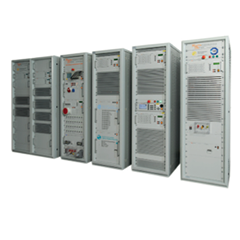Using battery energy storage systems in local PV installations and testing the performance of the connected solar inverters. A discussion, courtesy of Spitzenberger & Spies GmbH & Co. KG.
The longstanding problem when using photovoltaic energy harvesting is the night, when no energy production is available. Yet, several ways are currently being discussed to supply energy even during night-time with renewable energy.
One application for avoiding the nightly energy gap is an energy storage system. Centralised storage systems are already on the market, and are mainly driven by the power generating and distributing industry. For the storage medium, heat, gas, air, water is used and for smaller installations like family houses, new battery based storage systems are entering the market. The functional idea behind battery energy storage systems is shown in
Fig.1 (overleaf).
In this idea the solar inverter acts as a bi-directional gateway between the local installation and the public grid. In the above diagram, the optimum battery energy storage system is connected on the DC side of the solar inverter to the PV installation. The battery storage system can be charged either by using the DC generated from the PV installation or by using the AC/DC path of the inverter connected to the public grid.
Secondly, the battery storage system can also supply the public grid with internally stored energy. In installations with a unidirectional inverter – most of the existing installations – the battery storage system could be connected (as an option) on the AC side of the solar inverter. This installation is made easier, but then needs a second, bi-directional inverter for the charge/discharge capability of the battery energy storage system.
In both cases the optimum performance of the solar inverter is the main point talking about efficiency of the overall system.






























